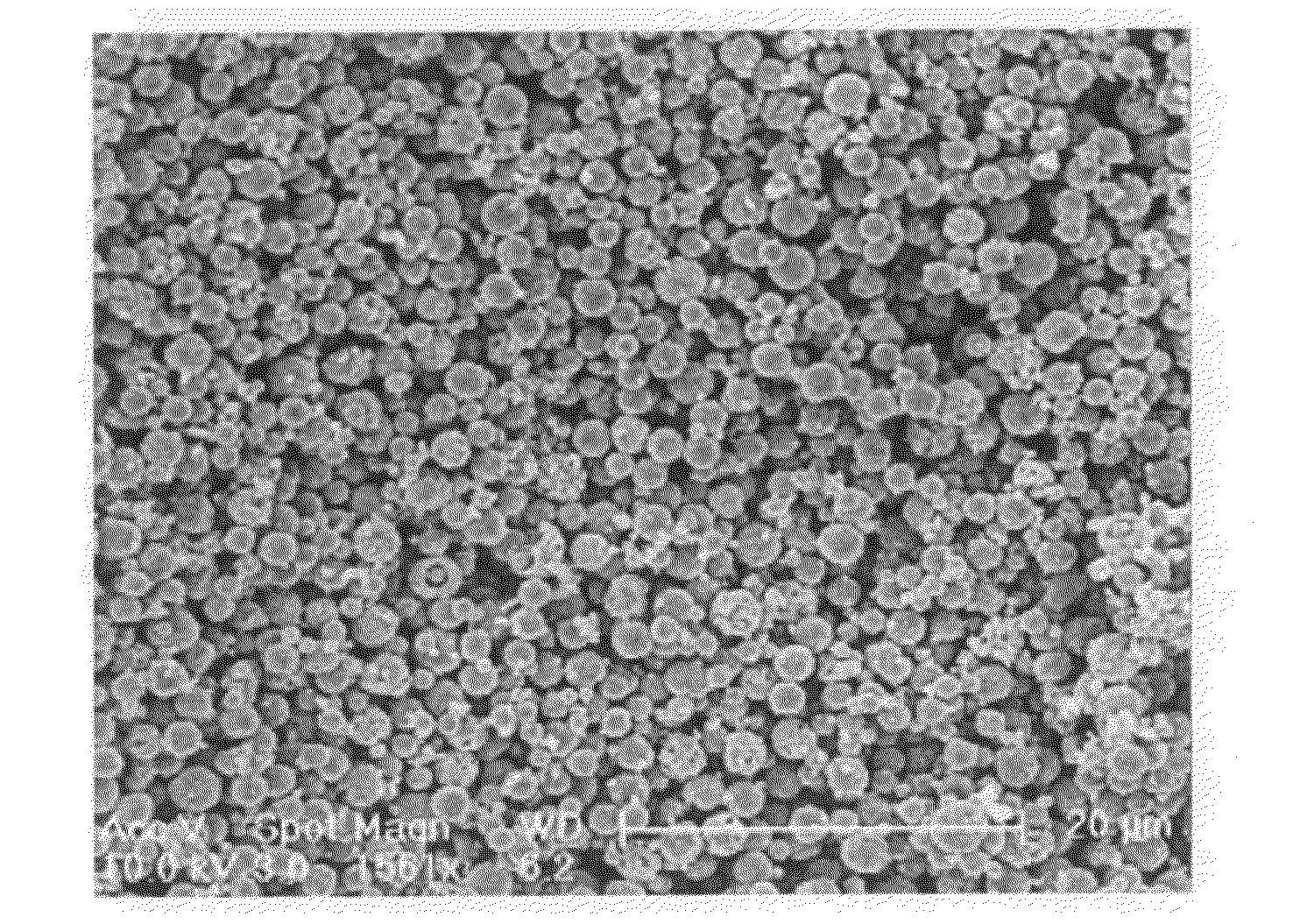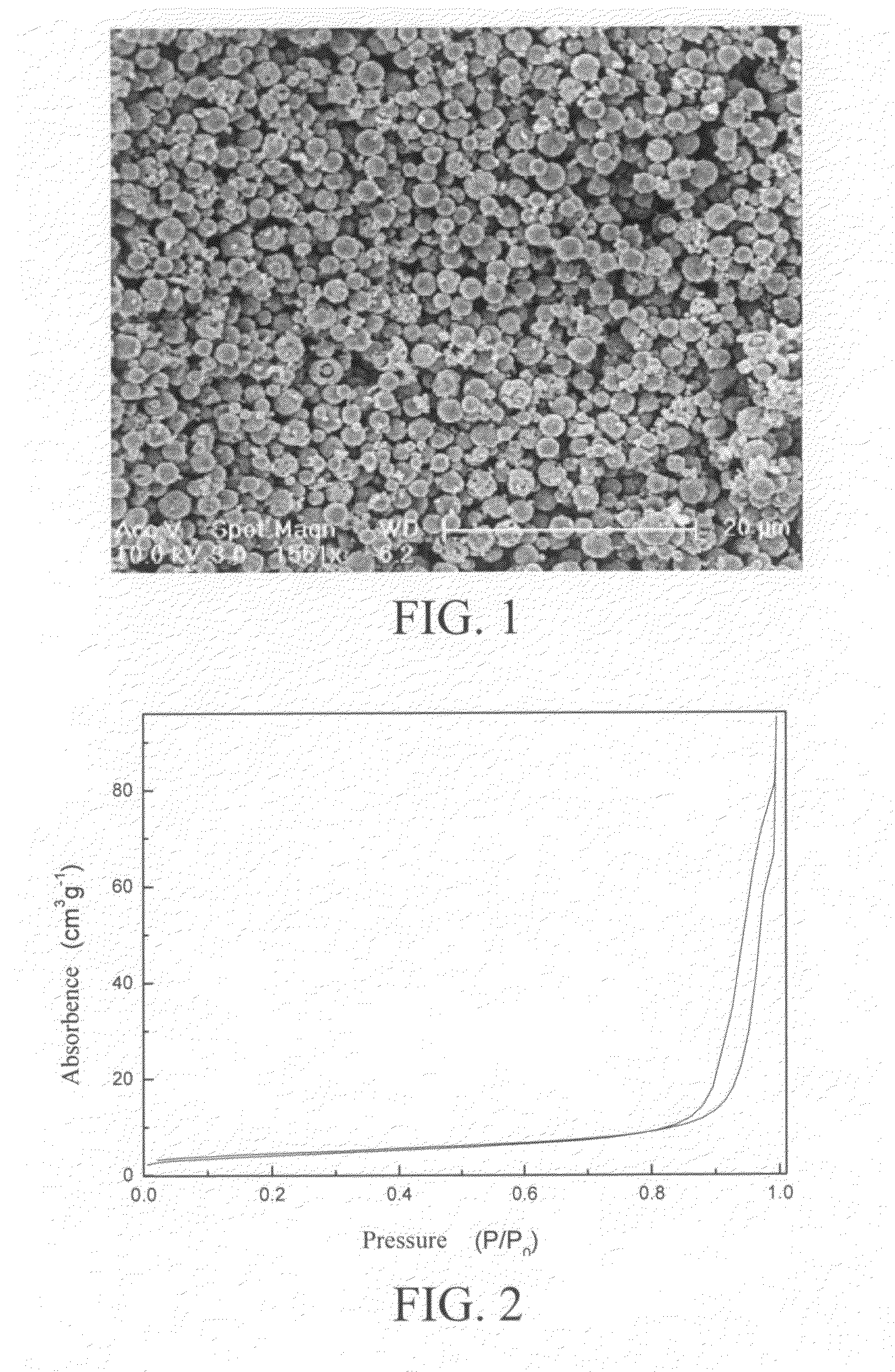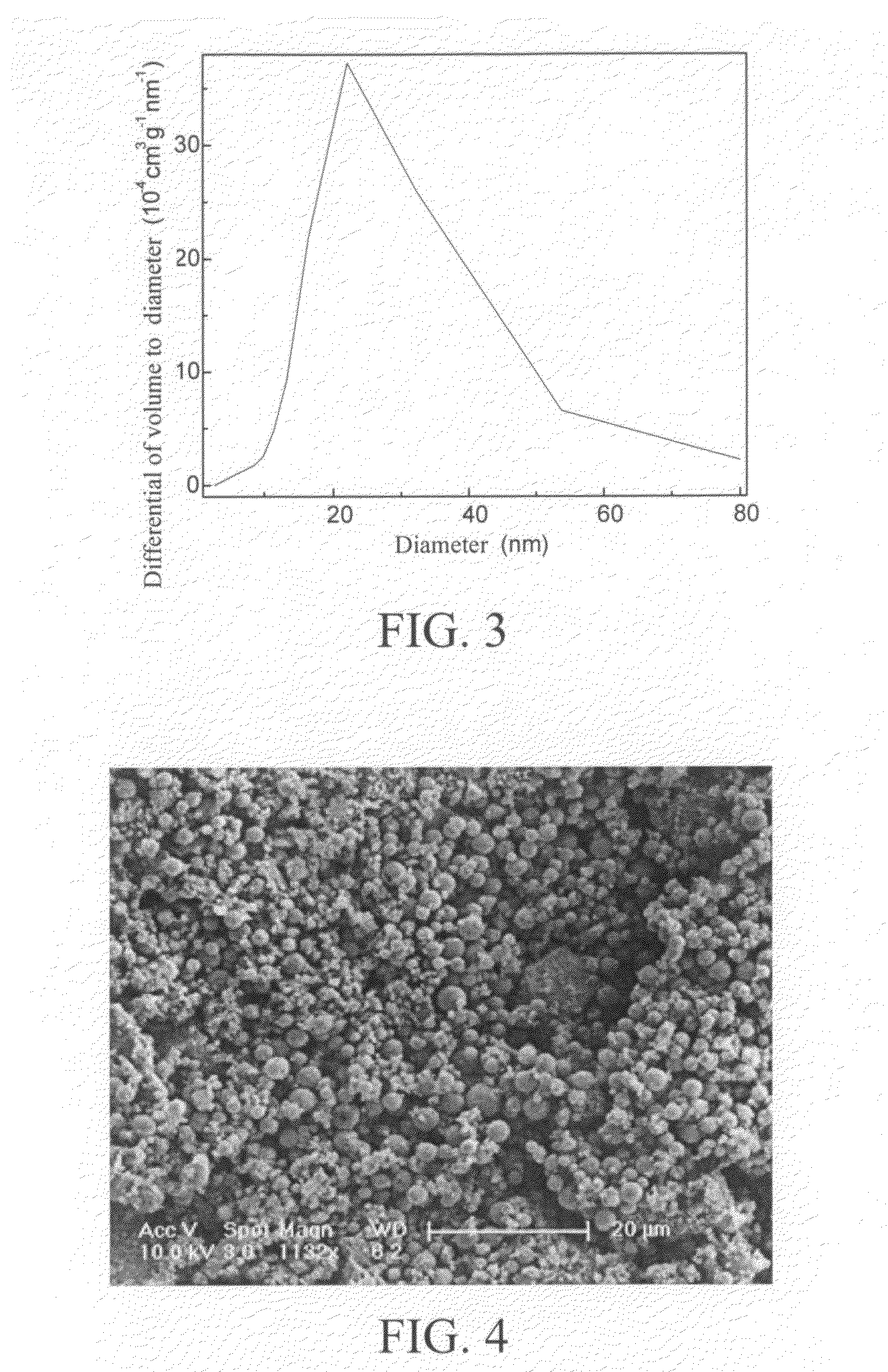Method for making mesoporous material
a mesoporous material and method technology, applied in the field of mesoporous material making, can solve the problems of high toxicity, special host materials, complicated procedures, etc., and achieve the effects of low toxicity, large specific surface area, and simple and easy operation
- Summary
- Abstract
- Description
- Claims
- Application Information
AI Technical Summary
Benefits of technology
Problems solved by technology
Method used
Image
Examples
example 1
[0029]A nickel oxide (NiO) nanocrystal coated with octadecyl amine is provided. The NiO nanocrystal has a diameter of about 20 nm, and a dispersing coefficient thereof is 10%. The NiO nanocrystal is dissolved in an organic solvent of cyclohexane, and a cyclohexane solution with concentration of about 10 mg / ml is achieved. A surfactant of sodium lauryl sulfate (SDS) of 300 mg is dissolved in a solvent of deionized water of 100 ml, and a water solution with a concentration of about 0.01 mol / ml is achieved. 10 ml of cyclohexane solution is mixed with 100 ml of water solution, further emulsified by ultrasonic method, until a uniform and stable emulsion is achieved. Thereafter, the emulsion is heated at 80° C. for 2 h by water heating method, in order to remove the organic solvent therefrom, and a deposit is achieved. The deposit is washed with deionized water after separation, and a NiO colloid is achieved. Then, the NiO colloid is dried at 60° C. and further calcined in an argon gas, a...
example 2
[0031]A mangano-manganic oxide (Mn3O4) nanocrystal coated with octadecyl amine is provided. The Mn3O4 nanocrystal has a diameter of about 10 nm, and a dispersing coefficient thereof is about 12%. The Mn3O4 nanocrystal is dissolved in an organic solvent of cyclohexane, and a cyclohexane solution with concentration of about 10 mg / ml is achieved. A surfactant of SDS of 300 mg is dissolved in a solvent of deionized water of 100 ml, and a water solution with a concentration of about 0.01 mol / ml is achieved. 10 ml of cyclohexane solution is mixed with 100 ml of water solution and further emulsified by an ultrasonic method, until a uniform and stable emulsion is achieved. Thereafter, the emulsion is heated at 80° C. for 2 h by a heating method, in order to remove the organic solvent therefrom, and a deposit is thus achieved. The deposit is washed with deionized water after separation, and an Mn3O4 colloid is achieved. Then, the Mn3O4 colloid is dried at 60° C. and further calcined in an ar...
example 3
[0033]A cobaltous oxide (CoO) nanocrystal coated with octadecyl amine is provided. The CoO nanocrystal has a diameter of about 150 nm and a dispersing coefficient thereof is about 20%. The CoO nanocrystal is dissolved in an organic solvent of cyclohexane, and a cyclohexane solution with concentration of about 10 mg / ml is achieved. A surfactant of SDS of 300 mg is dissolved in a solvent of deionized water of 100 ml, and a water solution with a concentration of about 0.01 mol / ml is achieved. 10 ml of cyclohexane solution is mixed with 100 ml of water solution and further emulsified by an ultrasonic method, until a uniform and stable emulsion is achieved. Thereafter, the emulsion is heated at 80° C. for 2 h by water heating method, in order to removing the organic solvent therefrom, and a deposit is achieved. The deposit is washed with deionized water after separation, and a CoO colloid is achieved. Then, the CoO colloid is dried at 60° C. and further calcined in an argon gas, and even...
PUM
| Property | Measurement | Unit |
|---|---|---|
| concentration | aaaaa | aaaaa |
| temperature | aaaaa | aaaaa |
| temperature | aaaaa | aaaaa |
Abstract
Description
Claims
Application Information
 Login to View More
Login to View More - R&D
- Intellectual Property
- Life Sciences
- Materials
- Tech Scout
- Unparalleled Data Quality
- Higher Quality Content
- 60% Fewer Hallucinations
Browse by: Latest US Patents, China's latest patents, Technical Efficacy Thesaurus, Application Domain, Technology Topic, Popular Technical Reports.
© 2025 PatSnap. All rights reserved.Legal|Privacy policy|Modern Slavery Act Transparency Statement|Sitemap|About US| Contact US: help@patsnap.com



